A couple weeks ago, we took a trip down to the region around Bordeaux, France. Since it was a long drive, we decided to stop by the famous Chartres Cathedral.
This ultimate expression of high Gothic architecture was truly amazing. It literally rises out of the town around it, disproportionately large. The cathedral was the site of numerous pilgrimages after one of the French monarchs (either Charlemagne or Charles the Bald) brought the supposed veil of the Virgin Mary to the cathedral after one of the crusades and countless pilgrims followed.

The building has survived numerous wars and restorations to retain its original grandeur and elegance. It took the shape you see today in the year 1260 when it was dedicated in the presence of King Louis IX (who is also known as Saint Louis).
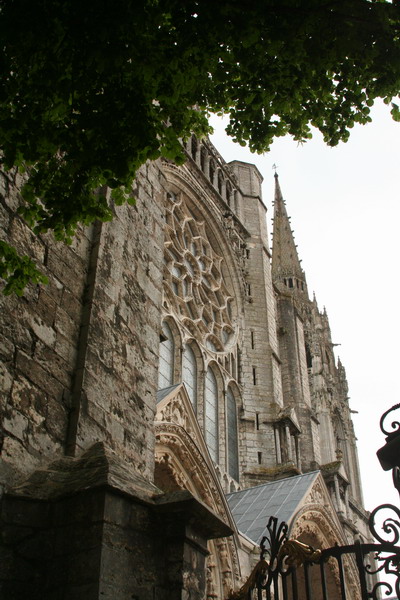
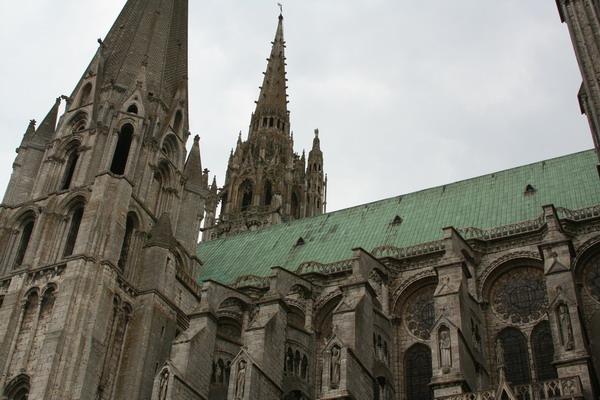
Perhaps even more impressive than the building surviving a tumultuous French history, is the stained glass that dates from the early 13th century. Of the original 183 stained glass windows, 152 have survived. The blue hues are particularly renowned, especially this Madonna and Child.
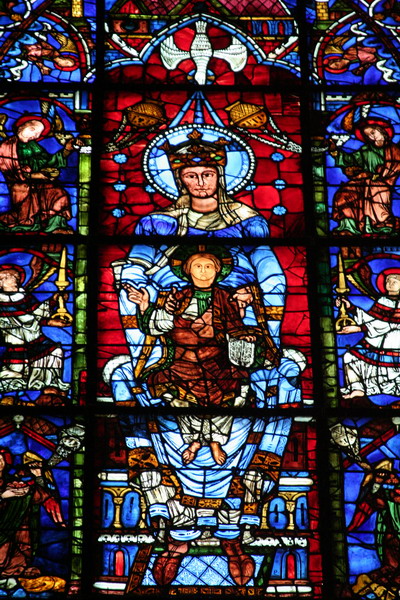
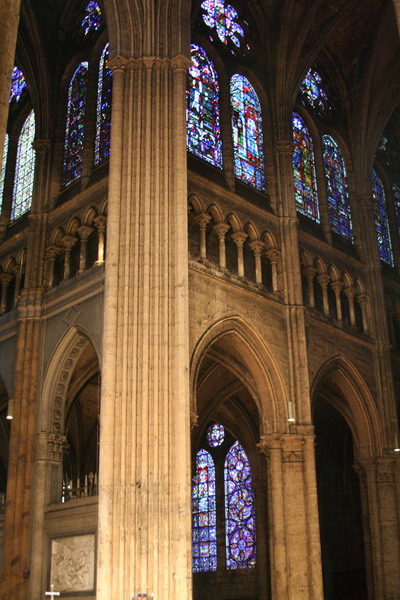
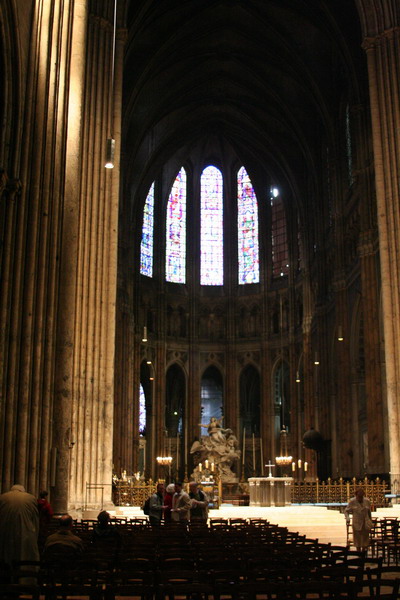
This impressive monument to medieval builders is certainly one of my favorites. It’s easy to see why this was chosen as a world heritage site.
However, our real trip was to venture all the way to southern France into the area surrounding Bordeaux, France. So, until then…
–Jim
Month: June 2008
Scotland
A few weeks ago, we took a journey to the country of Scotland. As I probably don’t need to mention, it’s also part of Great Britain, along with England, Wales and Northern Ireland.
We traveled back to the British Isles with our very good friends Jen and Andy. They have fast become some of our favorite traveling companions. It was a great trip to an amazing, beautiful land with some of the nicest people we’ve met. Anywhere.
After flying into Glasgow, we spent our first day on the bonnie, bonnie banks o’ Loch Lomond (or so the famous Scottish song goes).
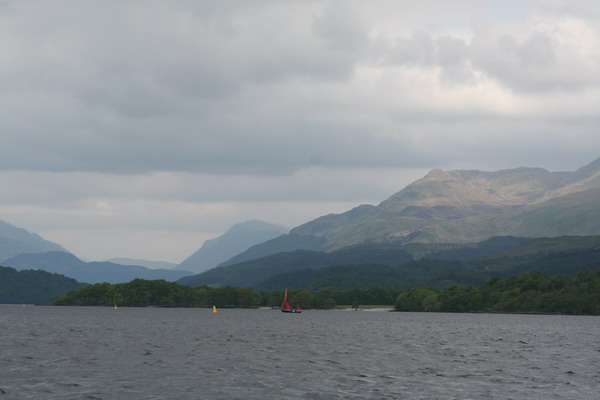
Here we all are on the mail boat that toured us around the lake for a few hours.
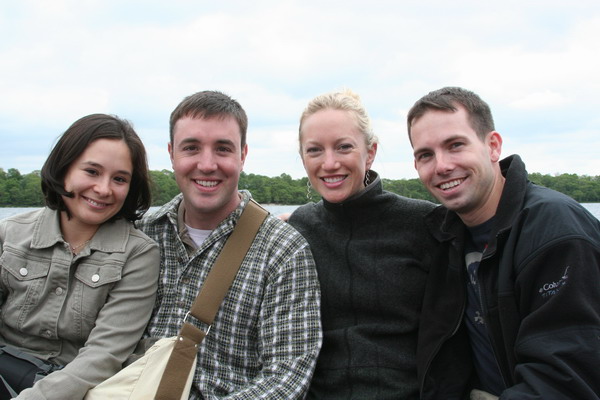
A better view of our cruiser.

As you might imagine, we also felt the need to hike around the loch. So, we headed off to explore the trail next to the water.
Doesn’t Anna’s hair look nice?? J
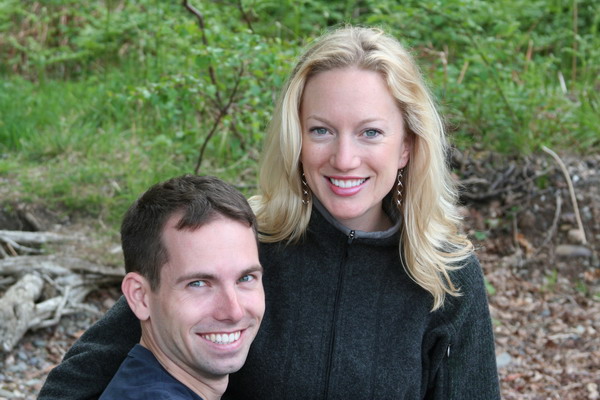
The emerald forest was majestic.
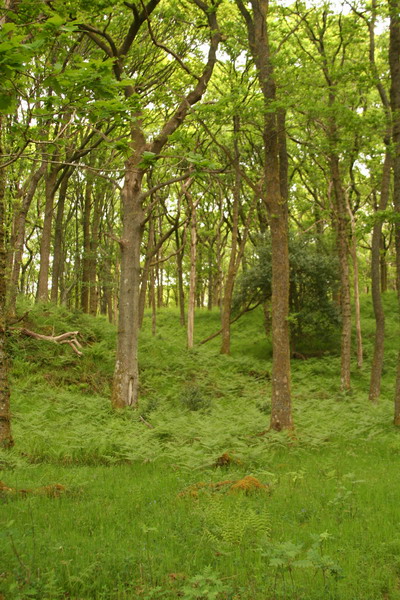
Jen was a very graceful tree-climber… Can’t you tell?
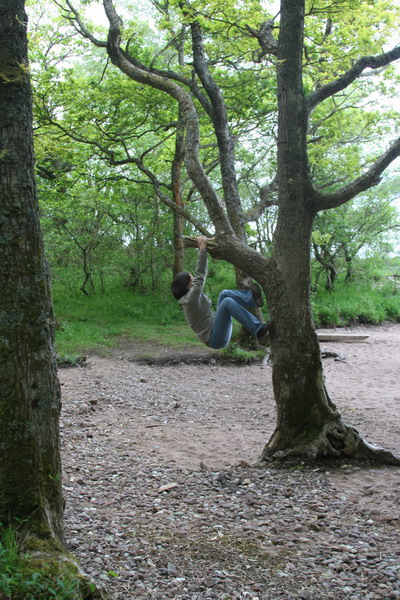
If you’ve spent any time around me and Jen (much to the frustration of Anna and Andy), you’ll know that we tend to be competitive. So, we had a little competition on who could climb higher.
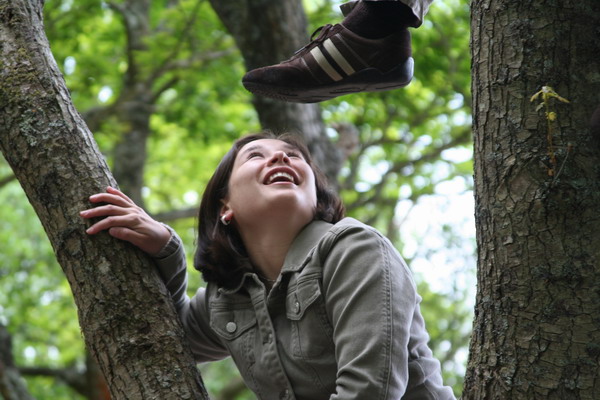
After our adventure on/around Loch Lomond, we drove across the island to the Scottish capital city of Edinburgh (pronounced something like Edden-burra). In the fifteenth century, it replaced Scone as the seat of government (you’ll see Scone a little later). Now, Edinburgh is the second largest city in Scotland, after Glasgow. Since none of us are economists, the fact that Adam Smith was born in this city made no difference to us. Still, he is just one of many famous people from Edinburgh. The others that you may care more about are Sir Sean Connery, Sir Arthur Conan Doyle (think: elementary my dear Watson…), J.K. Rowling, and former Prime Minister Tony Blair.
There is a formidable rock outcropping that provided a natural defense and naturally led early inhabitants to build a castle on it. Now, Edinburgh Castle forms the end of a very scenic road, known as the Royal Mile. We had fun exploring it. Interestingly, the rock where the castle is built is very hard and survived the onslaught of the last ice age. The area to the east was softer rock, but was sheltered from the ice and now forms a mile long tail to the hard crag. Thus, we have the geologic basis for the Royal Mile.

Next, we wandered down the tail and turned around to admire the architecture.
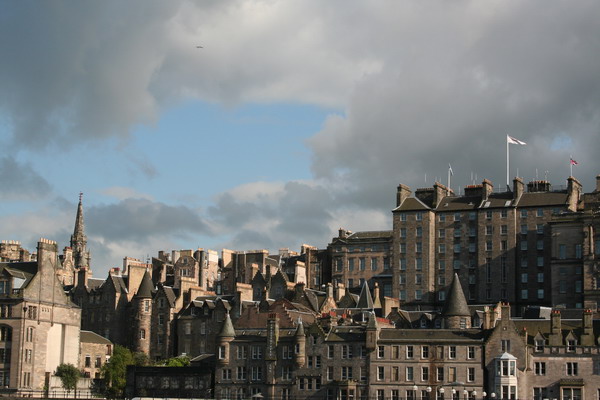
Ahead of us was the Princes Street garden.
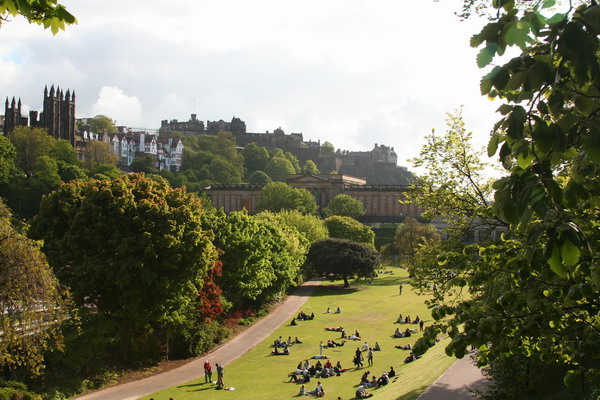
Anna and Jen were all about hanging out and enjoying the day. Andy and I readily agreed to enjoy the grass.
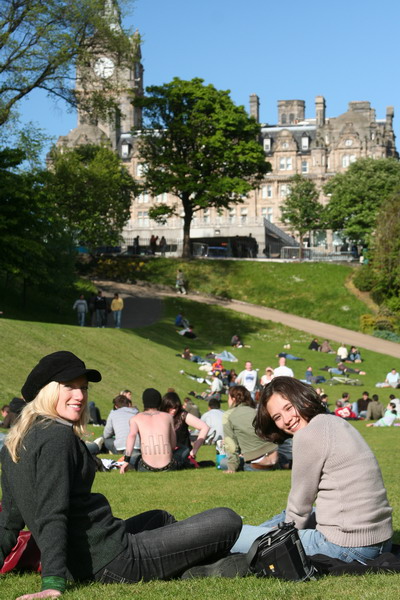
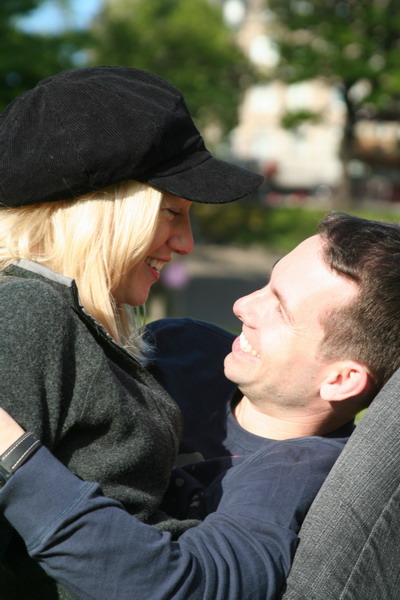
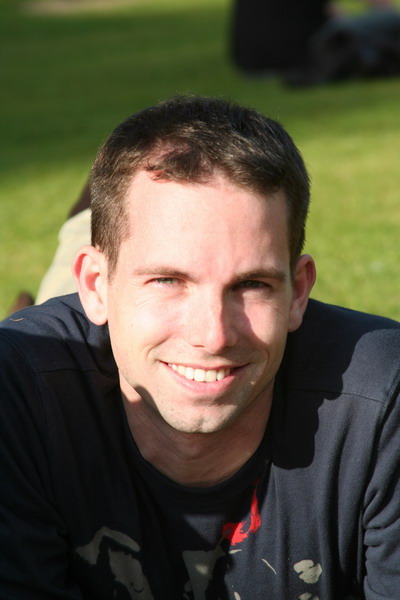
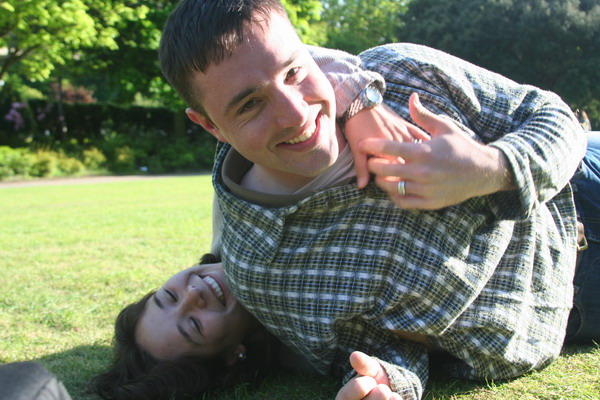
This is a view back to Edinburgh Castle.
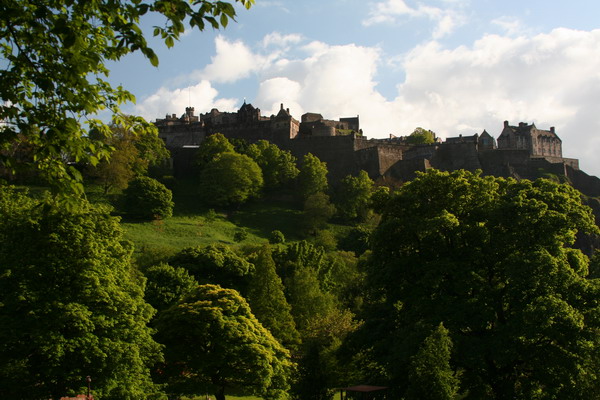
That night we took a tour of the underground city. Although tales abound of ghosts wandering, we didn’t see anything more eerie than a tour guide wearing all black and trying really hard to scare her guests.
The next day we got up and drove northwest to the historic home of golf: St. Andrews Royal and Ancient Golf Club. Although the Old Course of St Andrews is officially public, the greens fee is nearly $300. Plus, since there is so much demand, tee times are assigned by a lottery system. So, with that information in mind, I decided to forego a golf at the oldest golf course in the world. That didn’t stop us from paying a visit to the home of the 2010 Open Championship (AKA the British Open).
This is the 18th green of the Old Course and where the Open Championship was first played in 1873. It has since been held here 26 more times, most recently in 2005. When the Open Championship returns in 2010 though, it will be played on the Castle Course which is set to open later this month.
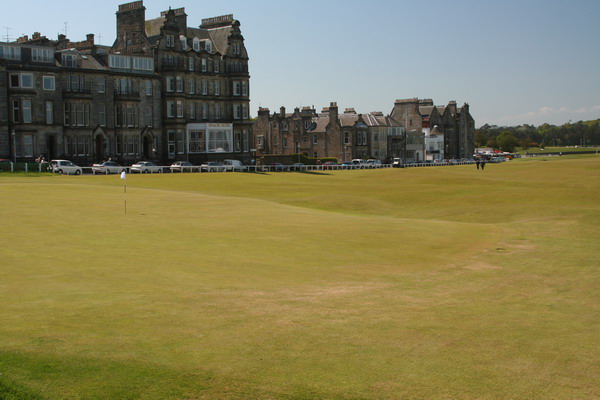
A few lucky players finishing their round on the Old Course.
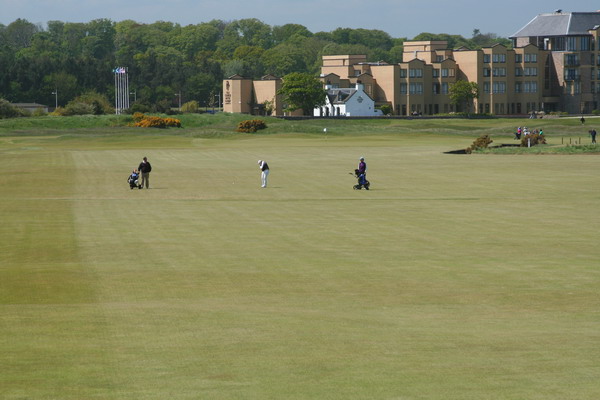
What I didn’t realize before we arrived is that St. Andrews actually has 6 different courses (7 when the Castle Course opens). Plus, the Old Course originally had 22 holes, 11 out and 11 back. In 1764, the Royal and Ancient Golf Club decided that some holes were too short and combined them to make what has become the standard, an 18-hole course.
For the golfers out there, the game was played a little differently in the 18th century. For example, when a golfer completed a hole, he had to use a scoop of sand to tee his ball up within 2 club lengths of the hole.
This is the Jubilee course, which is right next to the ocean. Its greens fee is a much more reasonable $140.
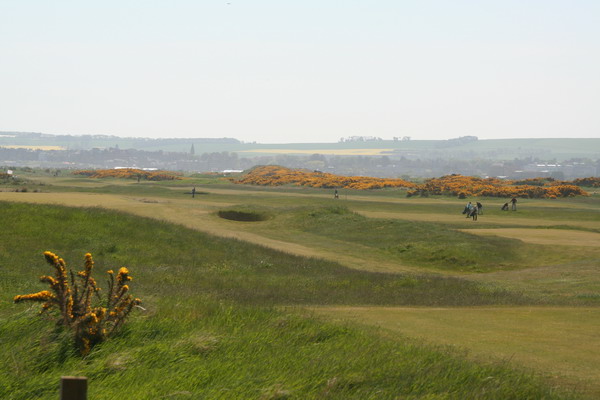
The windswept beaches were also fun to play in. Here is Jen, ready to capture the action.
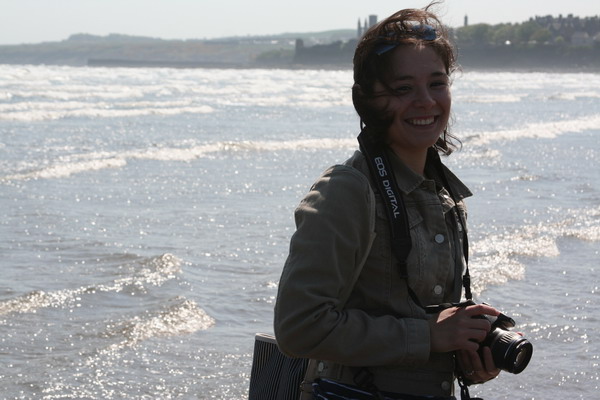
The happy, but wind strewn group on the beach.
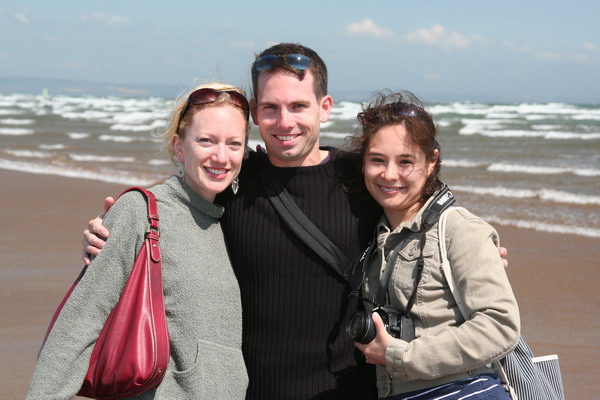
Next on the itinerary is the historic home of the Stone of Scone. Although it’s currently at Edinburgh Castle, it used to be housed here, at the Scone Castle. Many Scottish kings were crowned here: from Robert the Bruce (think: Braveheart … even if it’s not historically accurate) to James VI who in 1603 became James I when he inherited the English throne from Queen Elizabeth, the last of the Tudor Dynasty. Scotland wasn’t officially a part of the United Kingdom until 1707 with the twin Acts of Union by the Scottish and English parliaments, which formally united the two countries.
This is Scone Castle, where the Earl of Scone still lives.
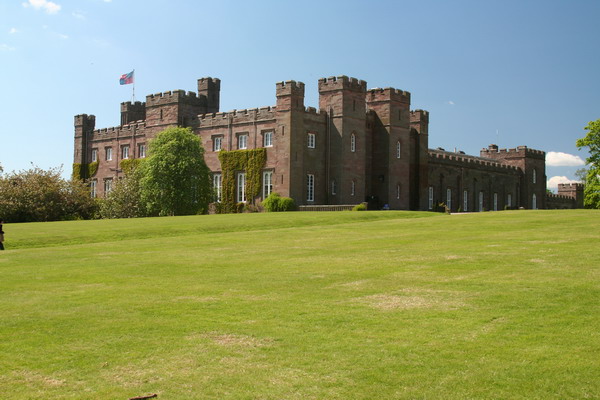
It was easy to imagine riding a carriage through the gate to attend a coronation ceremony. Well, ok, not that easy, but it was still picturesque.
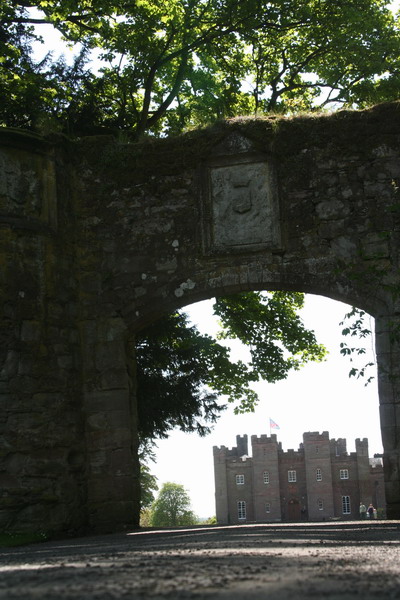
Maze gardens are always fun. Not surprisingly, we had a race to see who could reach the center first. I won’t mention who won.
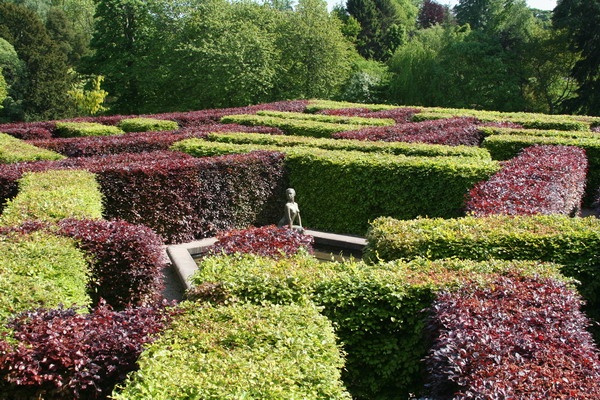
After searching in vain for scones to eat (the food and castle have no connection, in case you were wondering), we headed further north to the Scottish Highlands. Although we didn’t stay in this castle, we did stay in a very romantic bed and breakfast just up the road. We were the only guests and thoroughly enjoy our host, Dot, who treated us like royalty (she learned that skill while working for royalty in London).
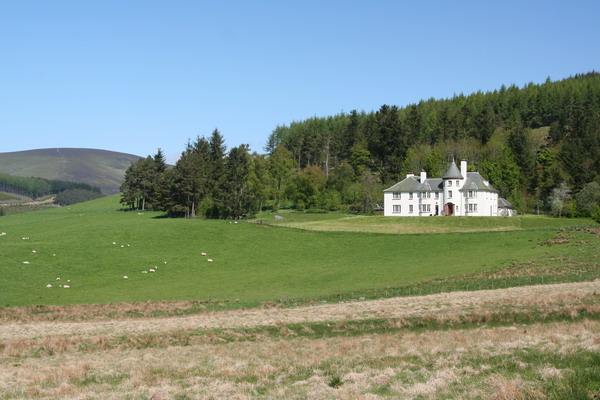
We finished our trip the same way we began, with a hike. This one was a little more rigorous, but still very enjoyable.
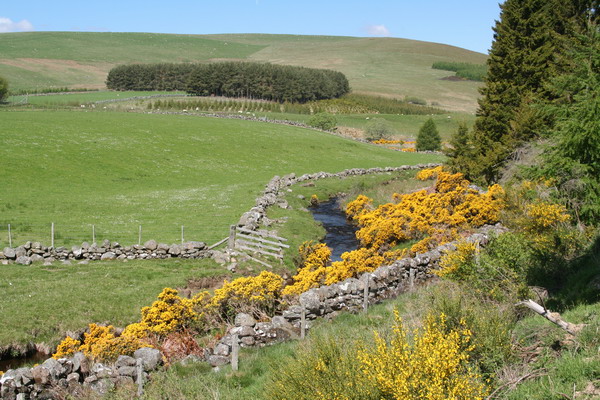
Although there is very strong evidence disproving the existence of the Loch Ness monster, we were convinced that Nessy might have been lurking in this shallow loch.

After the hike, we drove back to Glasgow to enjoy a final Scottish dinner, and then boarded the plane to return to Germany. It was another great trip with our dear friends Jen and Andy. We concluded that the stunning landscape, friendly people and great culture make this one of our top 10 favorite countries. We look forward to coming back sometime soon.
Until our next adventure…
–Jim
